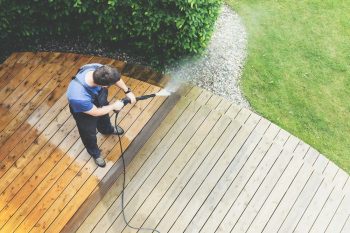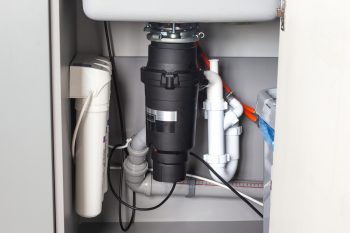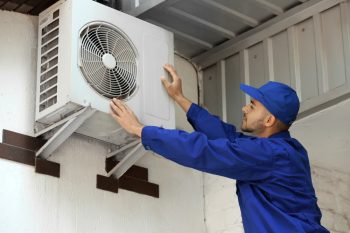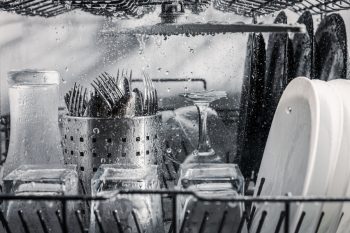
A vacuum cleaner is a staple appliance in almost every household, but have you ever wondered how this essential device works? From the moment you switch it on to the point when you see the dust and dirt disappear, there’s a lot going on under the hood. In this article, we will delve into the inner workings of a vacuum cleaner, exploring its components, principles, and the technology behind it.
A vacuum cleaner works by creating a low-pressure zone that sucks in air, along with dust and debris. This is done by an electric motor that powers a fan, creating a powerful flow of air. The air and particles are then passed through a filter or bag that traps the dirt, while the clean air continues out of the vacuum cleaner’s exhaust port. This process is based on the principle of high and low air pressure.
The Basic Principle
The basic principle behind the functioning of a vacuum cleaner is the creation of suction. When the vacuum cleaner is turned on, an electric motor activates, driving a fan or impeller that generates a powerful flow of air. As the air moves through the vacuum cleaner’s nozzle, it creates a partial vacuum or low-pressure zone. This low-pressure zone causes the surrounding air, along with dust and debris, to be drawn into the vacuum cleaner. The air and particles pass through a filter or porous bag that traps the dirt while allowing the air to continue flowing through the vacuum cleaner and out the exhaust port. This principle relies on the difference between high air pressure outside the vacuum cleaner and low air pressure inside the vacuum cleaner, which is created by the fan or impeller.
Key Components of a Vacuum Cleaner
A vacuum cleaner is more than just a simple cleaning device. It’s a complex machine made up of several key components, each playing a crucial role in its operation. These components include:
- Intake port: This is where the cleaning accessories, such as brushes and nozzles, are attached to collect dirt and debris from surfaces.
- Exhaust port: This is where the air is expelled after passing through the vacuum cleaner.
- Electric motor: The motor powers the suction system and the internal fan, creating the vacuum that draws dirt and debris into the machine.
- Internal fan: Located behind the rotating brush, the fan guides dirt and debris through the vacuum cleaner by creating a constant stream of air.
- Porous bag or dust canister: This component collects the dirt and debris that are sucked into the vacuum cleaner. Some vacuum cleaners use bags, while others use canisters that can be emptied and reused.
- Housing: This contains all the other components and provides the structure for the vacuum cleaner.
How the Filter System Works
A vacuum cleaner filter system works by using negative pressure to force air through a series of filters. These filters trap particles and debris while allowing clean air to pass through. The main types of vacuum filters include bag filters, foam filters, cartridge filters, cyclone filters, and HEPA filters.
Role of Attachments
Different vacuum cleaner attachments are designed to aid in cleaning various surfaces and hard-to-reach areas more effectively. These include crevice tools, dusting brushes, upholstery tools, extension wands, motorized brush heads, and bare floor brushes.
Bagged vs Bagless Vacuum Cleaners
Bagged vacuum cleaners collect dirt and debris in a replaceable bag, while bagless vacuum cleaners use a dust cup or cyclone system to collect and store dirt. The choice between these two depends on personal preferences and specific cleaning needs.
Robotic vs Traditional Vacuum Cleaners
Robotic vacuum cleaners offer convenience and automated cleaning, while traditional vacuum cleaners are manually operated and offer more suction power for deep cleaning.
Common Issues and Solutions
Like any machine, vacuum cleaners can face issues that affect their performance. These include lack of suction, broken vacuum belt, excessive noise, overheating, and poor brush roll performance. Regular maintenance and proper use can help prevent most vacuum cleaner issues.
In conclusion, understanding how a vacuum cleaner works can help you use it more effectively and maintain it properly. It’s not just about turning it on and moving it around; it’s about knowing how the different components work together to keep your living space clean and dust-free.
Frequently Asked Questions
How can I improve the suction power of my vacuum cleaner?
There are several ways to improve the suction power of your vacuum cleaner. First, check the bag or dust canister. If it is full, empty it. Second, inspect the vacuum cleaner’s filters. If they are dirty, clean or replace them. Third, check the hose for blockages and remove any that you find. Fourth, make sure the vacuum cleaner’s settings are appropriate for the surface you’re cleaning.
What is a HEPA filter and why is it important in a vacuum cleaner?
HEPA stands for High-Efficiency Particulate Air. A HEPA filter is a type of mechanical air filter that works by forcing air through a fine mesh that traps harmful particles such as pollen, pet dander, dust mites, and tobacco smoke. Using a vacuum cleaner with a HEPA filter is beneficial, especially for those who suffer from allergies or asthma, as it can help to improve the air quality in your home.
How often should I replace the bag or empty the dust canister in my vacuum cleaner?
The frequency of replacing the bag or emptying the dust canister depends on the usage. However, as a general rule, it’s best to replace the bag or empty the dust canister when it’s about two-thirds full. This helps to maintain optimal suction power.
Is it necessary to clean my vacuum cleaner’s filter? If so, how often?
Yes, it’s necessary to clean your vacuum cleaner’s filter. Over time, the filter can become clogged with dust and debris, reducing the vacuum cleaner’s efficiency. Generally, you should clean the filter every three to six months, but check your vacuum cleaner’s manual for specific recommendations.
How do I know if my vacuum cleaner’s belt is broken?
If your vacuum cleaner’s belt is broken, it may not be able to turn the brush roll effectively, leading to reduced cleaning efficiency. Signs of a broken belt include a burning smell, a loud noise when the vacuum cleaner is running, or visible damage to the belt. If you suspect the belt is broken, it’s best to replace it immediately to prevent further damage to your vacuum cleaner.












